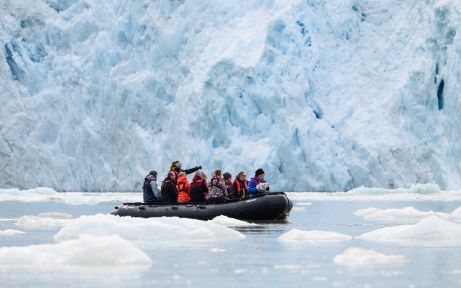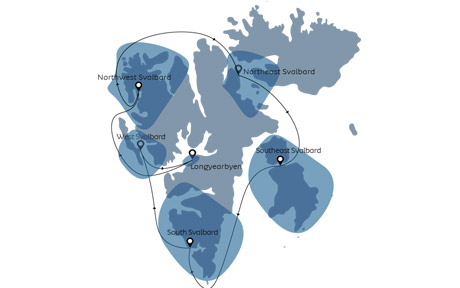
Expert guidance for your cruise vacation!
Let us connect you with our cruise expert to help you to plan the best vacation at the lowest possible price. For fastest service, call us at +91 9920688575
8 Days - Star Seeker Christening Sailing[Miami to San Juan]
Cruise Line: Windstar cruises
Ship: Star Seeker
Sailing Dates: Jan 15 2026
Port: Miami to San Juan
8 Days - Star Seeker Christening Sailing[Miami to San Juan]
The essential Seychelles
Cruise Line: Ponant Cruises
Ship: Le-Bougainville
Sailing Dates: Jan 17 2026 | Jan 25 2026
Port: Victoria, Mahe - Victoria, Mahe
The essential Seychelles
Ports of Call & Excursions

Day 1 - Victoria, Mahe
Discover Mahe, the main island of the Seychelles and also the largest of the archipelago, home to the capital, Victoria. Mahe has almost 70 beaches of fine sand, framed by the emblematic granite rocks, and whose crystal clear waters are renowned for their rich underwater life. The island is also famous for its splendid mountain panoramas accessible on hikes, such as the Morne Seychellois, which is 905 metres high and overlooks the Indian Ocean. Mahe is also an island full of history where fine colonial properties rub shoulders with Creole houses - and donât forget the marvellous Botanical Gardens in Victoria.

Day 2 - Cousin Island
This small granitic islet west of Praslin measures around thirty hectares and is teeming with life. A private property until 1968, Cousin Island was bought by the International Council for Bird Preservation (now known as BirdLife International) to be converted into a nature reserve. The main aim of this effort was first and foremost to save two endangered bird species, the Seychelles warbler and the Seychelles fody. This operation was a real success, as the island is now the most protected in the archipelago and is home to a large number of plants and animals endemic to the Seychelles.

Day 3 - Remire island
Remire Island is like a piece of confetti in the Indian Ocean and is a captivating place to visit. Located in the Outer Islands of the Seychelles, it is prized for its unique biodiversity, including its exceptionally rich underwater life. The rare inhabitants of this tropical islet watch over its preservation, and a walk amidst its lush vegetation, home to delightful birds, will delight fans of unspoilt areas. For those who love snorkelling, myriad colourful fish live among the coral reefs that border the island.

Day 4 - Curieuse Island
Situated off the coast of Praslin, Curieuse has a distinguishing feature: its red earth. Discovered in 1768 by the French explorer Marc-Joseph Marion du Fresne, it was ravaged by a fire in 1771 and then home to a leper colony of which a few vestiges still remain. Declared a national marine park in 1979, it is home to many underwater species, which can be discovered while scuba diving or snorkelling in the idyllic waters of the Indian Ocean. But above all, Curieuse is renowned for the hundreds of Aldabra giant tortoises that live there. It is highly likely that you will get the chance to meet these fascinating reptiles. Along with Praslin, it is also the only island on which the sea coconut grows wild.

Day 5 - Aride Island
Aride is an island in the Seychelles situated a few kilometres north-west of Praslin. Listed as a nature reserve, this pearl of the Indian Ocean will seduce you with the beauty of its landscapes of wild cliffs and fine-sand beaches. Protected from human impact and sometimes called âbird capitalâ, it is home to several endemic plants as well as exceptional wildlife. Most notably, it is the refuge of an impressive number of seabirds (Seychelles magpie-robins, terns, noddies, and more), and reptiles, such as Wrightâs skinks, which can be found in the islandâs wooded areas. Sea turtles can also be observed on the islandâs beaches.

Day 6 - Grande Soeur
Located 6 km north of La Digue, Grande Soeur Island is renowned for its two sumptuous beaches and its translucent waters, protected by a coral reef. An ideal spot for snorkelling and observing the sea turtles that co-exist here with the many multi-coloured fish. The pristine Grande Soeur Island is considered to be one of the most beautiful islands in the Seychelles.

Day 7 - Praslin Island
Situated some forty kilometres away from Victoria, Praslin is the second largest island in the Seychelles. Its idyllic beaches where granite rocks nestle in immaculate sand correspond perfectly to how we imagine the Seychelles to be. They invite visitors to dive into the turquoise waters, which are ideal for snorkelling. In the centre of the island, hidden in the heart of a stunning tropical rainforest, lies the Vallée de Mai Nature Reserve, listed as a UNESCO World Heritage Site. In this veritable plant sanctuary, several endemic species of palm trees can be observed, as well as the famous sea coconut, which can weigh up to 20 kg and is sometimes called âcoco fesseâ because its shape calls to mind a pair of buttocks.

Day 8 - La Digue Island
La Digue Island is a veritable concentration of all the beauty of the Seychelles. Located 6 km south-east of Praslin, this small piece of land that looks like paradise is the third-largest island in the Seychelles, despite its modest size (5 km by 3 km)! Turquoise waters just asking you to swim in them, lush vegetation sheltering giant tortoises, beaches of fine sand fringed with coconut trees and surrounded with those emblematic large granite rocks with their pink highlights like at the famous Anse Source dâArgent: the perfect picture postcardâ¦Â Authentic and preserved, the island follows a peaceful rhythm, with the only means of transport along its little roads being bikes or traditional oxcarts.

Day 9 - Victoria, Mahe
Discover Mahe, the main island of the Seychelles and also the largest of the archipelago, home to the capital, Victoria. Mahe has almost 70 beaches of fine sand, framed by the emblematic granite rocks, and whose crystal clear waters are renowned for their rich underwater life. The island is also famous for its splendid mountain panoramas accessible on hikes, such as the Morne Seychellois, which is 905 metres high and overlooks the Indian Ocean. Mahe is also an island full of history where fine colonial properties rub shoulders with Creole houses - and donât forget the marvellous Botanical Gardens in Victoria.
Adventure in the Bissagos Islands
Cruise Line: Ponant Cruises
Ship: Le-Bellot | Le-Laperouse
Sailing Dates: Jan 24 2026
Port: Dakar - Dakar
Adventure in the Bissagos Islands
Ports of Call & Excursions

Day 1 - Dakar
On the tip of the African continent, the buzzing capital of Senegal stretches along the narrow peninsula of Cape Verde. You may be overwhelmed by its sheer size, but Dakar will win you over with its richly diverse districts, appealing cultural scene and rich natural surroundings. In the historic centre, you'll enjoy the pell-mell of colours and tasty delights in Kermel market. Far from the effervescence of the city, Gorée Island, a UNESCO World Heritage Site, is known as a place of remembrance, having once been a slave trade outpost. On the other side of the plateau, the wild Madeleine islands are protected by a national park.

Day 2 - At sea
During your journey at sea, make the most of the many services and activities on board. Treat yourself to a moment of relaxation in the spa or stay in shape in the fitness centre. Depending on the season, let yourself be tempted by the swimming pool or a spot of sunbathing. This journey without a port of call will also be an opportunity to enjoy the conferences or shows proposed on board, depending on the activities offered, or to do some shopping in the boutique or to meet the PONANT photographers in their dedicated space. As for lovers of the open sea, they will be able to visit the shipâs upper deck to admire the spectacle of the waves and perhaps be lucky enough to observe marine species. A truly enchanted interlude, combining comfort, rest and entertainment.

Day 3 - Kere, Bijagos
The private island of Kere is an unspoiled Eden, a one-hectare (two-acre) stretch of tropical forest in the heart of the Bissagos Islands. One original feature of this island is that a small, sustainable and fair-trade ecotourism business was developed upon it. On the islandâs magnificent beach, a Frenchman has set up a business to show people around this exceptional natural environment or to take them out for some game fishing, particularly in search of tarpon, a fish weighing over a hundred kilos (220 pounds). The bungalows made from earth and straw blend into the idyllic setting and reflect the mindset of the isletâs owner: authentic and respectful of nature and people.

Day 3 - Carache Island, Bijagos
In the midst of a rich natural environment, you will enjoy a fascinating encounter with the Bijagos, who have been successful at taming their environment and preserving their ancestral way of life. Five villages provide a home for the islandâs few thousand inhabitants, who rely on a subsistence economy: they take from nature only what they need, they cultivate rice, breed chickens and pigs, fish on a small scale and use all the parts of the oil palm. Cob huts with thatched roofs are the traditional dwellings. Among other things, you will be able to enjoy a wonderful show of authentic traditional dancing.

Day 4 - Orango Island, Bijagos
Some 20 kilometres off the coast of west Africa, the Bissau-Guinean archipelago of Bissagos is famous for its abundant biodiversity. The richness of its marine animal and plant life afforded it the status of Biosphere Reserve by UNESCO: dolphins, green tortoises, monkeys, striped antelopes and hundreds of thousands of migrating birds find refuge here. Composed of five islands and several islets, Orango is the largest and most mysterious island in the archipelago. Its national park and marine protected area lie in the heart of the Biosphere Reserve. During your zodiac outings, you will set off to discover this preserved environment, home to the Bijogo people, the true custodians of this sanctuary.
Â

Day 4 - Uno Island, Bijagos
Covered in beautiful savannah, paddy fields and lush forests, the island of Uno, or Ilha de Uno, is one of the most populated in the Bissagos archipelago. In its many villages, life follows the pace of the everyday scenes and traditions of the Bissago people. The lifestyle of these island people remains relatively untouched by colonial domination and external influences, and still honours animist beliefs and rites, such as the fanados, which are coming-of-age initiations for young men and women that involve them spending four months in the forest with the village elders. By sanctifying the natural environment, the islanders are protecting the archipelagoâs unique biodiversity.

Day 5 - Orango Island, Bijagos
Some 20 kilometres off the coast of west Africa, the Bissau-Guinean archipelago of Bissagos is famous for its abundant biodiversity. The richness of its marine animal and plant life afforded it the status of Biosphere Reserve by UNESCO: dolphins, green tortoises, monkeys, striped antelopes and hundreds of thousands of migrating birds find refuge here. Composed of five islands and several islets, Orango is the largest and most mysterious island in the archipelago. Its national park and marine protected area lie in the heart of the Biosphere Reserve. During your zodiac outings, you will set off to discover this preserved environment, home to the Bijogo people, the true custodians of this sanctuary.
Â

Day 5 - Uno Island, Bijagos
Covered in beautiful savannah, paddy fields and lush forests, the island of Uno, or Ilha de Uno, is one of the most populated in the Bissagos archipelago. In its many villages, life follows the pace of the everyday scenes and traditions of the Bissago people. The lifestyle of these island people remains relatively untouched by colonial domination and external influences, and still honours animist beliefs and rites, such as the fanados, which are coming-of-age initiations for young men and women that involve them spending four months in the forest with the village elders. By sanctifying the natural environment, the islanders are protecting the archipelagoâs unique biodiversity.

Day 6 - Joao Vieira Island, Bijagos
In the far south-east of the Bissagos Islands, João Vieira is a small unspoiled island in the João Vieira and Poilão Marine National Park. This park, where a number of sacred sites can be found, is home to a wonderful biodiversity. On the practically uninhabited island of João Vieira, the Bijagos have set up temporary camps for fishing or for collecting the fruit of oil palms. Like everywhere else in the archipelago, the local population displays ingenuity to adapt to this incredible environment.

Day 6 - Cavalos Island, Bijagos
A UNESCO Biosphere Reserve, the island of Cavalos is the second-largest nesting site in West Africa. Here you will be able to observe many bird species, including terns, in particular near the freshwater lake. Take a stroll on the beach full of shells, stretching all the way around the islandâs 6-km (3.8-mile) circumference. Some rocks have mango trees growing on them, which just rise above the surface during high tide. The interior of the island, blanketed in palm trees and high grasses, is inhabited by a colony of wild pigs.

Day 7 - Bolama
Bolama, the capital of Portuguese Guinea from the late 19th century to the end of the 1930s, is shrouded in the surreal and poetic atmosphere of a ghost town forgotten by time. Along the streets covered in ochre earth, the vestiges of neoclassical colonial buildings hint at what was once the sumptuous government palace or the governorâs residence. Now neglected, this hard-to-reach natural harbour surrounded by mangrove swamps once served as an outpost for keeping a close eye on the Guinean population that had come to seek refuge on these remote islands of the Bissagos archipelago to escape their colonisers.

Day 7 - Canhabaque, Bijagos
Canhabaque Island, also known by the name Roxa, is covered in lush vegetation and boasts pretty beaches alternating with rocky formations. The first island in the archipelago to be inhabited, it is today home to a community of around 2,500 inhabitants, spread across various tabancas (rural villages). Long closed to tourism, it is considered the most traditional island in the whole archipelago in terms of customs and lifestyle. It competes with Caravela for the reputation of the most beautiful island. It has an animist and matrilineal society; women are highly predominant in the management and maintenance of balance in the tabancas.

Day 8 - Caravela Island, Bijagos
Dotted with authentic and wild landscapes, the Bissagos archipelago is a constellation of islands covered in savannah, forests of palm trees, mangrove trees, silk-cotton trees, baobabs and, in large part, mangrove swamps. From the island of Caravela, you will be able to set out in a Zodiac® dinghy to explore the mangrove and observe the African grey hornbill, the palm-nut vulture, the kingfisher, the weaverbird and some of the many species that fly to this region each year. It is the second most important site for migratory birds in West Africa, after Banc dâArguin in Mauritania: herons, curlews, red-chested swallows. In full immersion, far from the beaten track, your discovery of the archipelago will take on an air of adventure.

Day 9 - Dakar
On the tip of the African continent, the buzzing capital of Senegal stretches along the narrow peninsula of Cape Verde. You may be overwhelmed by its sheer size, but Dakar will win you over with its richly diverse districts, appealing cultural scene and rich natural surroundings. In the historic centre, you'll enjoy the pell-mell of colours and tasty delights in Kermel market. Far from the effervescence of the city, Gorée Island, a UNESCO World Heritage Site, is known as a place of remembrance, having once been a slave trade outpost. On the other side of the plateau, the wild Madeleine islands are protected by a national park.
8 Days - In the Wake of the Spanish Armadas [Oranjestad to Colon]
Cruise Line: Windstar Cruise
Ship: Wind Surf
Sailing Dates: Feb 01 2026
Port: Oranjestad to Colon
8 Days - In the Wake of the Spanish Armadas [Oranjestad to Colon]
| Day | Port | Arrive | Depart |
|---|---|---|---|
| 0 | ORANJESTAD | 06:00 PM | |
| 1 | AT SEA | 12:00 PM | 05:00 PM |
| 2 | SANTA MARTA | 09:00 AM | 06:00 PM |
| 3 | CARTAGENA | 9:00 AM | 6:00 PM |
| 4 | AT SEA | 9:00 AM | 6:00 PM |
| 5 | BOCAS DEL TORO | 9:00 AM | 6:00 PM |
| 6 | AT SEA | 9:00 AM | 6:00 PM | 7 | COLÃN | � | � |
| 8 | COLÃN | 07:00 AM | � |
The best of Japan
Cruise Line: Ponant Cruises
Ship: Le Soleal
Sailing Dates: Mar 16 2026
Port: Osaka - Busan
The best of Japan
Ports of Call & Excursions

Day 1 - Osaka
Like its big sister Tokyo, Osaka is the product of ancestral traditions and amazing technological innovations. And despite its size, its location on the Pacific Ocean give it a sense of serenity. The main historic landmark is the 16th century Osaka Castle, which stands proud in the midst of majestic skyscrapers. The lively streets of Dotomburi and the bizarre Shinsekai district attract thousands of locals and visitors. A multitude of restaurants offer menus full of regional specialities: takoyaki, made with octopus, and other succulent dishes such as kushikatsu kebabs.

Day 2 - Tamano
Located on the island of Honshu, hugging the banks of the Sento Inland Sea, Tamano is a popular destination thanks to its sun-drenched climate. Upon arrival, marvel at the way in which the city has been built along the coast at the foot of a deep, dark forest. In the area surrounding Tamano, stroll down the streets of Kurashiki, known as the 'white-walled city' in a nod to the pretty façades of the houses that line the streets of this ancient Edo-period trading town. Another major regional attraction is the Seto Ohashi bridge. Its 12.5 kilometres make it the world's longest double-decker bridge.

Day 3 - Miyajima Island
At the heart of the Inland Sea, Miyajima, the âisland sanctuaryâ will reveal its treasures. In the background you will see the Shinto Grand Sanctuary, whose entrance is guarded by a magnificent vermillion âToriiâ. Considered to be one of the most beautiful sites in the Japanese islands, you will be transported by the unique character and the serenity of this sacred site.

Day 3 - Hiroshima
Visiting Hiroshima is a moving experience. The town spreads along Honshu Island, along the inside coasts of Seto. While firmly focused on the future, Hiroshima doesn't forget its past, and a visit to the Peace Memorial Park and Genbaku Dome is a must. You'll enjoy the city's modern, cosmopolitan atmosphere and effervescent nightlife just as much as the peaceful stillness of its natural parkland areas such as splendid Shukkei-en, the town's historic garden.

Day 4 - Beppu, Oita
A favourite destination for the Japanese, Beppu is now famous throughout the Japanese archipelago thanks to its onsen â volcanic hot springs in which people immerse themselves to relax with family or friends. From Beppu, you will set off to discover a lush, peaceful valley in which sit 60 majestic stone Buddhas carved out of the cliff face between the 12th and 14th centuries. Exuding a soothing air of serenity, the Mangetsuji site seems to have drifted off to sleep in the heart of a dense bamboo forest surrounded by rice fields. Recognised as a National Treasure of Japan, this set of sacred sculptures offers travellers a unique, wonderful experience.

Day 5 - Miyazaki
The cradle of Japanese mythology, Miyazaki is a hidden treasure on the southern coast of KyÅ«shÅ«. Known for its climate, its golden beaches and its spectacular rocky formations, it is an invitation to exploration and contemplation. In the heart of the city, the Miyazaki-jingÅ« Shinto shrine stands majestically, surrounded by ancient forests and peaceful gardens, in which an atmosphere of serenity reigns. Make the most of the authenticity of this city with fascinating local culture and, during the visit of the Miyazaki Shrine, fall under the spell of the kagura, a dance and song performance by the shrineâs priests and helpers.

Day 6 - Kagoshima
The seaside city of Kagoshima, at the south of Kyushu Island, ï¾ is best known for Sakurajima, an active volcano that faces Kinko Bay. A visit to this busy metropolis will remind you just how much the volcano is part of the inhabitants' everyday life: in the wake of the almost daily eruptions, a delicate layer of ash settles on everything. The top of a buried torii (traditional Japanese gate) measuring three metres that was 'swallowed up' by a giant lava flow in 1914 can still be seen. The power of nature will send a shiver down your spine.

Day 7 - Yakushima
A splendid sub-tropical, mountainous island listed by UNESCO as a World Heritage site, Yakushima is one of the most beautiful islands in the Japanese archipelago. Its extensive yakusugi forest contains some of Japanï¾s oldest living trees ï¾ cedars that are over 1000 metres tall and up to 7,000 years old. The Senpiro and Toroki waterfalls, each one several dozens of metres high, are equally impressive. A feast for the eyes.

Day 8 - Nagasaki
Located on the north-west coast of Kyushu, Nagasaki will impress you by its rich heritage. Despite the destruction in 1945, you can visit several ancient sites, including the beautiful 19th-century Catholic Church of Oura and its garden, the sanctuary of Suwa Shrine or several Buddhist temples. A visit to the Atomic Bomb Museum gives you insight into the extent of the damage caused by the nuclear attack. Close by, a walk in the Memorial Peace Park leads you to a collection of objets d'art offered as a gift from Japan to the world.

Day 9 - Busan
With around four million inhabitants, Busan is the second largest metropolis on South Korea, after Seoul. This dynamic harbour city, located in the south-east, surrounded by the warm waters of the Sea of Japan, benefits from a mild, pleasant climate. Youâll find delightful simply to stroll around the lively streets and explore the cityâs outstanding cultural heritage of art galleries, museums, and Buddhist sites, such as the Haedong Yonggungsa temple, which elegantly sits on the waterfront. Rich too in magnificent beaches and superlative natural landscapes, Busanâs peaceful atmosphere will win you over, as will its inhabitants, whom youâll have the pleasure of meeting.
8 Days - Creatures & Cultures of Costa Rica & Mexico[Puerto Caldera to Puerto Vallarta]
Cruise Line: Windstar cruises
Ship: Star Seeker
Sailing Dates: Apr 20 2026
Port: Puerto Caldera to Puerto Vallarta
8 Days - Creatures & Cultures of Costa Rica & Mexico[Puerto Caldera to Puerto Vallarta]
Atlantic Odyssey from the Canary Islands to the Iberian Peninsula
Cruise Line: Ponant Cruises
Ship: Le-Bougainville
Sailing Dates: Apr 20 2026
Port: Las Palmas de Gran Canaria, Canary Islands - Malaga
Atlantic Odyssey from the Canary Islands to the Iberian Peninsula
Ports of Call & Excursions

Day 1 - Las Palmas de Gran Canaria, Canary Islands
A stopover of sunny climes, Las Palmas is located on the north-east coast of Gran Canaria. A few streets away from Puerto de la Luz port, youâll discover the vast Las Canteras beach, bordered with the townâs characteristic palms. Youâll find these palms are all over Las Palmas, in the streets and squares, especially on the plaza de Santa Ana in the heart of the historical district. It feels like youâve travelled back in time here, as you stand looking at the tall houses beside the Santa Ana cathedral. Very close by, you can visit the Casa de Colón, a museum dedicated to the famous explorer. The museum is housed in the palace belonging to the islandâs former governor. Chances are, youâll be drawn to the covered Vegueta market to partake in some daily life along with the locals and taste some unfamiliar dishes.

Day 2 - Arrecife de Lanzarote, Canary Islands
Established on a coast sprinkled with cliffs, Arrecife has a pleasant beach and a lagoon full of charm, Charca of San Ginés, where the fishermen anchor their boats. The city also proposes places fed by history and culture, such as the castle San Gabriel, former fort of defense of the city.

Day 3 - San Sebastian de la Gomera, Canary Islands
La Gomera rises from the water like a mirage. This volcanic island in the Canaries features jagged cliffs, valleys covered in palm trees, and beaches of black sand bathing in crystal-clear waters. But its greatest treasure lies at its heart: an exceptional laurisilva, a laurel forest whose prehistoric vegetation has been preserved thanks to the microclimate on the island. This unique ecosystem, common a few million years ago in the tropics, forms the Garajonay National Park, listed as a UNESCO World Heritage Site. Like the birds, the Guanches contribute to the poetry of the island too, with their whistled language called Silbo. This magical-sounding, melodious language is also listed as World Heritage by UNESCO.

Day 4 - Santa Cruz de Tenerife, Canary Islands
The capital city of Tenerife is located on the north-east coast of the island. Close to the port is the monumental Plaza de España, bedecked with a fountain and plant sculptures. Around the plaza, you can admire the white marble Triunfo de la Candelaria obelisk, the historic casino of Santa Cruz and the majestic Guimerà theatre. Not far from here, the picturesque Iglesia de la Concepción church features the characteristic traits of Canaries architecture.

Day 5 - 6 - Funchal, Madeira
This attractive capital of Madeira is located on the southern coast of the island. The walkways of the old town are lined with azulejos, or multi-coloured mosaics. If you follow these patterns, theyâll lead you to the appetising Mercado dos Lavradores market stands, the Frederico de Freitas museum, and the golden panelling of the Cathedral de la Sé. Along the waterfront, the palm tree-shaded promenade leads you to the teleféricos de Monte, Madeira's cable cars. Its panoramic cabins transport you over the city to top of Monte, where you can see the picturesque botanical garden.

Day 7 - At sea
During your journey at sea, make the most of the many services and activities on board. Treat yourself to a moment of relaxation in the spa or stay in shape in the fitness centre. Depending on the season, let yourself be tempted by the swimming pool or a spot of sunbathing. This journey without a port of call will also be an opportunity to enjoy the conferences or shows proposed on board, depending on the activities offered, or to do some shopping in the boutique or to meet the PONANT photographers in their dedicated space. As for lovers of the open sea, they will be able to visit the shipâs upper deck to admire the spectacle of the waves and perhaps be lucky enough to observe marine species. A truly enchanted interlude, combining comfort, rest and entertainment.

Day 8 - Tangier
Nestling in the Bay of Tangier, this bewitching Moroccan city lies at the northwestern tip of the country, along the famous Strait of Gibraltar. Following in the footsteps of the writers and artists inspired and seduced by the cityâs climate and setting, youâll love its rich landscapes and multicultural charm. Youâll instantly understand as soon as you set foot in the heart of the Medina. An architectural masterpiece, the Kasbah is your gateway to the Sultanâs Palace and its gardens. If you prefer beaches to museums, you can relax just a few minutes from the city on the beautiful sweep of sand bathed by the Atlantic Ocean.

Day 9 - Malaga
A historical and festive town, Malaga is located in Andalusia, on the Costa del Sol. Between the marina and the beaches, the seaside promenade of La Farola offers an ideal setting for strolling and relaxing. Set slightly further back, the Malagueta bullring is one of the emblematic sites of the city. From the hill overlooking the old town, one can see Gibralfaro castle and the Alcazaba, two fortified ensembles rising out from the cypresses and maritime pines. To visit Pablo Picassoâs birthplace, you will go first to the courtly plaza de la Merced. A few streets back from here, you can explore the museum dedicated to the artist, in the Buenavista palace.
8 Days - Scenic Alaska [Vancouver to Juneau]
Cruise Line: Windstar Cruise
Ship: Star Seeker
Sailing Dates: May 07 2026 | May 15 2026 | Jul 04 2026 | Jul 11 2026 | Aug 07 2026 | Aug 15 2026
Port: Vancouver to Juneau
8 Days - Scenic Alaska [Vancouver to Juneau]
8 Days - Scenic Alaska [Juneau to Vancouver]
Cruise Line: Windstar Cruise
Ship: Star Seeker
Sailing Dates: May 07 2026 | May 15 2026 | Jul 04 2026 | Jul 11 2026 | Aug 07 2026 | Aug 15 2026
Port: Juneau to Vancouver
8 Days - Scenic Alaska [Juneau to Vancouver]
Svalbard Circumnavigation
Cruise Line: Albatros Cruises
Ship: Ocean Albatros
Sailing Dates: June 18 2025 | Jun 28 2026 | Jul 07 2026
Port: Longyearbyen, Spitsbergen to Longyearbyen, Spitzbergen
Svalbard Circumnavigation
Day 1
Longyearbyen, Spitsbergen. Embarkation
Board your flight in Norway and arrive in Longyearbyen, Svalbard - the world's northernmost... everything! This remarkable little city is not only the northernmost town in the world (if one excludes the tiny research community of Ny-Alesund, slightly further north on Svalbard), but also hosts the world's northernmost civilian airport, schools, bank and supermarket. The town's rugged frontier edge belies a core of warm Nordic hospitality and coziness - hyggligt, as we say in Denmark!
Immediately after landing in Longyearbyen, you find yourself in a different world. The chilly Arctic breeze can be felt as soon as you step onto the tarmac, and the famous signpost outside the terminal reminds visitors how far north they really are; as well as to keep watch for bears! The snow-capped mountain Hjorthfjellet looms over the airport on the far side of Adventfjorden, and off in the distance can be seen the saw-toothed peaks and languid glaciers of northern Spitzbergen.
After arrival, you will board the awaiting Ocean Albatros. After our mandatory safety briefing and lifeboat drill, head onto the outer decks to enjoy a glass of champagne while watching your expedition vessel leave civilisation behind... And set a course for adventure!
DAY 2
Kongsfjorden region, northwest Spitzbergen
During the ânightâ (what is night, when the sun never sets?), Ocean Albatros will have repositioned past the saw-toothed mountains of Prins Karls Forland and arrived in magnificent Kongsfjord. Surrounded by craggy mountains, bounded by the magnificent Kongsbreen and Kongvegen Glaciers, and crowned by the Three Crowns (a set of pyramidal mountains said to represent the monarchies of Norway, Sweden and Denmark), this is surely one of the most beautiful and tranquil corners anywhere in the world.
Our first landing will be at the small settlement of Ny Alesund. Situated further north than Longyearbyen, Ny-Alesund is Earth's northernmost settlement, if a group of scientific stations, a post office and a single shop open for a few hours can be described as such... You will have to judge for yourself!
These islands' geographical location has made them the staging post for exploratory and scientific expeditions for centuries - a proud legacy which continues to this day. The setting is spectacular, and the scientific projects are as fascinating as the history of the town, which has hosted the Nobile, the Norge and the Fram, Amundsen, Nansen and Nordenskiöld, all legends of polar exploration who passed this lonely outpost seeking to push the boundaries of humanity. The remnants of these expeditions (such as the mooring mast of the Norge) can still be seen today.
DAY 3
Northwest Spitzbergen
One of the largest protected wilderness areas in Europe, North West Svalbard was declared a national park in 1973. The area is famed for its history, which documents some of the earliest human arrivals on Svalbard. While Norse explorers may have sighted these icy shores during the Viking Age, the first definite arrival was the expedition of William Barents, the legendary Dutch explorer for whom the Barents Sea is named. While now protected from human distruption, when Barents arrived in 1596, he noted the vast numbers of whales and seals which were soon prey to English and Dutch whalers, who arrived within a decade of Barents to pillage the area's wildlife. The area occupies the triple point between land, sea and ice, and as such was the perfect location from which to harvest the gentle giants of the oceans. Sites used to dismember whale carcasses and render them for their precious oil include the Dutch settlement of Smeerenburg, where the remains of 16th Century blubber ovens and building foundations can still be seen. Other sites such as nearby Ytre Norskøya record the darker side of this industrialised slaughter, where hundreds of young men who hoped to make their fortunes are buried thousands of miles from home.
Today, all that remains from this period of history are bones and the scant remnants of human habitation. Slowly reclaimed by creeping Arctic nature, the region is now a nature lovers paradise. Tiny Arctic poppies and purple saxifrage defy the brutal conditions to flower in the brief summer, while geese, eider ducks and other seabirds return to the island to raise their young. Walrus can be found hauled out on beaches, and we must always be on careful lookout for wandering polar bears in this now again wild region.
DAY 4
Into the ice
An icy breeze touches your exposed cheeks. The scent of snow and sea fills your nostrils. Sunlight reflects off the floating ice, illuminating the clouds overhead. Enter an environment like no other, the vast shape-shifting realm of floating ice which crowns our planet. The vast ever-changing ice pack to the north of Svalbard stretches from this already isolated archipelago to the North Pole, and onwards across the Arctic Ocean towards the northern shores of Chukotka and Alaska.
The Arctic ice pack is one of Earth's largest habitats, although unlike most it varies hugely year on year, expanding in winter and retreating in summer. The location of the sea ice around Svalbard can also vary wildly - however, your Expedition Leader will work hard to maximise our chances of finding and exploring this impossibly remote environment. At first glance, this stark white wilderness seems barren, empty and lifeless. This icy wilderness holds on to its mysteries, and of course wildlife sightings are at the whims of Mother Nature. With a little perseverance however, the ice reveals its secrets.
As Ocean Albatros pushes through the narrow channels in the ice, tiny cod-like fish can be seen silhouetted against the ice in the clear water. Kittiwakes and Gloucous Gulls follow the vessel as it disturbs the water. Further out on the ice, black dots appear; moving closer, they resolve into seals, basking on the ice. A plume of water reflects the sunshine - a pod of belugas perhaps, or maybe even the vast gentle bowhead whale crushing the ice from below as its massive body surfaces. There, beyond the banks of rucked ice - a yellowish dot pads along the ice, the head swinging from side to side: the King of the Arctic continues his never-ending quest for prey. This is the kingdom of the polar bear, the vast icy wastes at the top of the world.
At the end of the day, we will start cruising towards the Hinlopen Strait that divides Spitsbergen and Nordaustlandet.
DAY 5
Northwest Svalbard
From the icy wilderness of the pack ice, we will head back towards land, cruising into the Hinlopen Strait. If the weather is on âour sideâ we may have a good view of the steep cliffs of Alkefjellet. The area is home to a dense congregation of Brünnichs guillemots - one of the largest colonies in the world. There are so many birds that hardly an inch is free! Nesting Brünnich's guillemots and other auks crowd the cliffs, while predatory skuas and gulls cruise the skies above, constantly on the lookout for their next meal. During the raucous summer the breeding pairs offer a wild view of frantic activity, both along the cliffs and in the sea in front - one of nature's most spectacular sights!
More wildlife awaits us as we land on the polar desert landscapes of Nordaustlandet. Although the polar desert landscapes of this region appear stark and barren, they are wildly beautiful - unearthly plantless landscapes illuminated by the weak Arctic sunlight. However, it is in the marine environment where Svalbard's biodiversity is richest. Walrus haul their vast bodies onto flat beaches to rest, where they snuggle together for warmth and protection. Belugas frolic in large pods in the waters off the coast, harvesting fish and crustaceans from the seabed, and further offshore the vast gentle baleen whales can sometimes be seen feasting upon copepods and small fish.
DAY 6
East Svalbard
As we continue to venture around these remarkable islands, we arrive in Southeast Svalbard - a region where the cold easterly polar waters collide with the last tepid gasp of the Gulf Stream. If the ice is passable, we can make it through the southern edge of the Hinlopen Strait and cruise through Freemansundet, which separates Barentsoya and Edgeoya. We enjoy the views of the massive Kapp Lee as we exit the Strait.
We will aim to land on Edgeoya, Svalbard's third largest island. Vast piles of snow-bleached bones on the island's beaches bear witness to the systematic and industrial-scale slaughter of walrus and beluga in their thousands. The earliest humans on the islands (mainly English and Dutch whalers and Russian Pomor trappers) had little regard for conservation, seeking only profit, a situation which continued well into the 19th century. Thankfully all wildlife on Svalbard is now protected by law, and vast tracts of the archipelago are designated as nature reserves and National Parks - some of the largest and richest in the world!
Further east on Edgeoya, sites include the walrus colonies of Andreetangen and Kapp Lee, and the spectacular raised shorelines and bird colonies of Sundneset. From these remote shores, we will cruise around Sorkapp and back towards Spitzbergen, the largest island of Svalbard.
DAY 7-8
South Svalbard
Having passed the southern tip of Spitsbergen we arrive back into the greener warmer regions of this Arctic wilderness. The southwest coast of Svalbard is washed by warmer water coming up through the Atlantic, so winter ice generally retreats first from this reagion. This allows us to enter the southern fjords of Bellsund and Hornsund - easily some of the most spectacular regions of this stunning archipelago. Throughout this maze of fjords and islands, birds cluster together on high cliffs and reindeer graze on the fertile slopes below, while icebergs drift by from the various large glaciers in the area. Tiny calico snow buntings flit between crags, while perfectly camouflaged purple sandpipers scamper along the shore. Look higher up on the vegetated slopes, and there - greyish white 'boulders' move and resolve themselves into sheep-sized reindeer: the unique subspecies native to Svalbard. A flash of bluish-black, and the screeches of nearby birds herald the arrival of the Arctic fox, the only native land predator on Svalbard (the polar bear being classified as a marine mammal).
The mountaintops are most often covered by dense clouds and the East-Spitsbergen current often leads pack ice into the mouths of the fjords. With a huge variety of landing sites to explore, this region is without doubt one of the most exciting and diverse regions of Svallbard! Options to explore in the area include the huge bird cliffs of Alkhjornet and Varsolbukta, and the historical sites of Calypsobyen and Bambsebu, where prospectors, trappers and a range of other adventurers attempted to make their fortunes.
DAY 9
West/Central Spitzbergen
During the night we will enter Forlandssundet, the strait which separates Prince Karls Forland from Spitsbergen. Our destinations may include Poolepynten (Poole Point), a small headland named after the British whaler Jonas Poole. Today the area is inhabited by herds of walruses who can be seen (and smelled!) from a distance. The large mammals flaunt their tusks and whiskers, as well as their considerable bulk. The remote beaches, rugged mountains and tundra plains of the region positively beg to be explored!
From Forlandsundet, we will return southwards during the afternoon towards the town of Longyearbyen, all the while on the lookout for wildlife and spectacular views as we return to civilisation.
DAY 10
Longyearbyen, Spitzbergen. Disembarkation
During the evening, the Ocean Albatros will reposition to return to the port of Longyearbyen. Even this small town will feel like a metropolis after days of isolation in the wilderness of the Arctic!
After enjoying exploring Longyearbyen and a fond farewell to the crew and fellow guests of Ocean Albatros, return to Svalbard Airport and join your flight back to the Norwegian mainland- with memories to last a lifetime.
*Prices are per person, based on double occupancy. Prices do not include Government Fees & Taxes. Pricing and availability subject to change without notice. STIC Travel Group reserves the right to refuse or honor any prices / sailings that are erroneously printed or quoted. Terms & Conditions apply.

Contact
2nd Floor, Tower C, Cyber Greens, DLF Phase-III, Gurgaon - 122002, Haryana, India. Phone: +91-124-4595300 Fax: +91-124-4114196 E-mail: info@sticgroup.com
We Accept: 
Secured By: 
Copyright © STIC GSA Services Pvt. Ltd. All rights reserved

![8 Days - Star Seeker Christening Sailing[Miami to San Juan] 8 Days - Star Seeker Christening Sailing[Miami to San Juan]](/images/packages/pkg-8.jpg)
![8 Days - Star Seeker Christening Sailing[Miami to San Juan] 8 Days - Star Seeker Christening Sailing[Miami to San Juan]](/images/packages/extraimages/9464_Star-Seeker-Christening-Sailing.jpg)
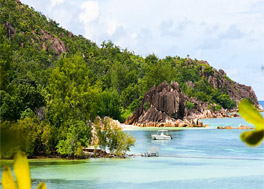
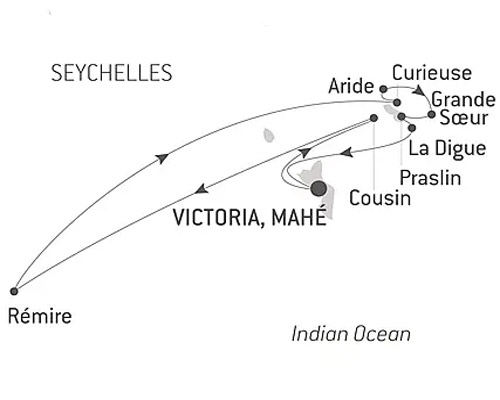
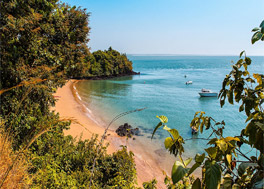
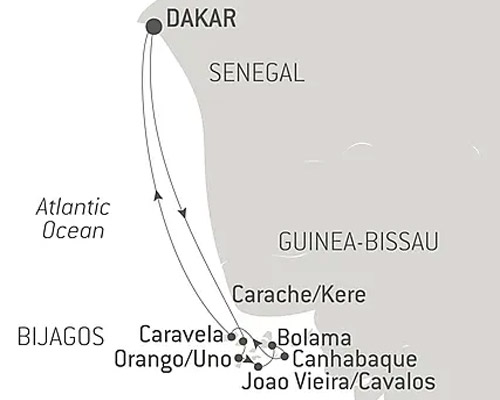
![8 Days - In the Wake of the Spanish Armadas [Oranjestad to Colon] 8 Days - In the Wake of the Spanish Armadas [Oranjestad to Colon]](/images/packages/16-oranjestad-aruba)
![8 Days - In the Wake of the Spanish Armadas [Oranjestad to Colon] 8 Days - In the Wake of the Spanish Armadas [Oranjestad to Colon]](/images/packages/extraimages/1721_16-map-wake_sp_armada_2_1_2026)
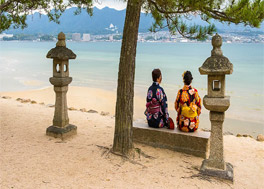

![8 Days - Creatures & Cultures of Costa Rica & Mexico[Puerto Caldera to Puerto Vallarta] 8 Days - Creatures & Cultures of Costa Rica & Mexico[Puerto Caldera to Puerto Vallarta]](/images/packages/Panama-1.jpg)
![8 Days - Creatures & Cultures of Costa Rica & Mexico[Puerto Caldera to Puerto Vallarta] 8 Days - Creatures & Cultures of Costa Rica & Mexico[Puerto Caldera to Puerto Vallarta]](/images/packages/extraimages/6787_Creatures.jpg)

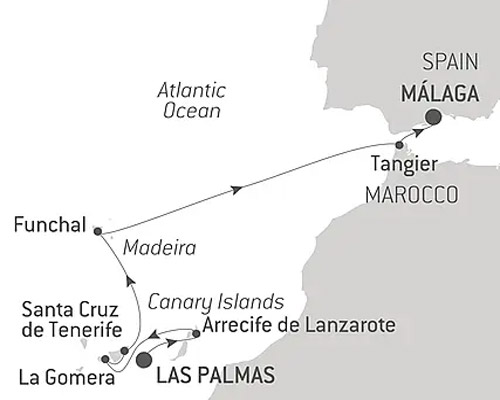
![8 Days - Scenic Alaska [Vancouver to Juneau] 8 Days - Scenic Alaska [Vancouver to Juneau]](/images/packages/Scenic-Cruising-Canadian-Inside-Passage1.jpg)
![8 Days - Scenic Alaska [Vancouver to Juneau] 8 Days - Scenic Alaska [Vancouver to Juneau]](/images/packages/extraimages/1472_7Days-Scenic-Alaska160721.jpg)
![8 Days - Scenic Alaska [Juneau to Vancouver] 8 Days - Scenic Alaska [Juneau to Vancouver]](/images/packages/Vancouver-BC.jpg)
![8 Days - Scenic Alaska [Juneau to Vancouver] 8 Days - Scenic Alaska [Juneau to Vancouver]](/images/packages/extraimages/8649_7Days-ScenicAlaska230721.jpg)
